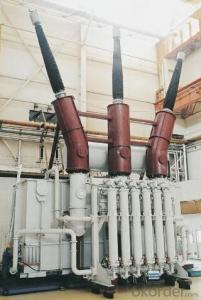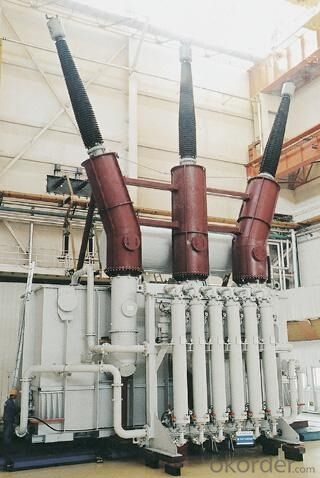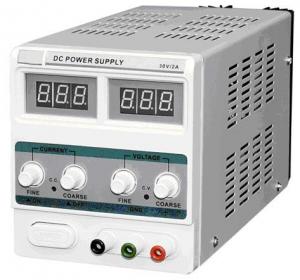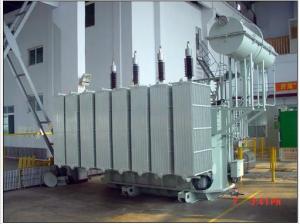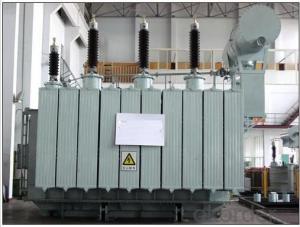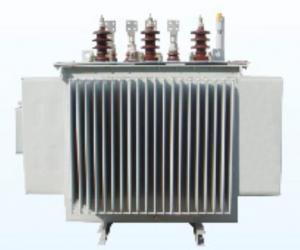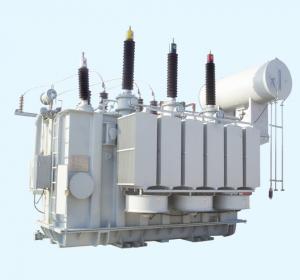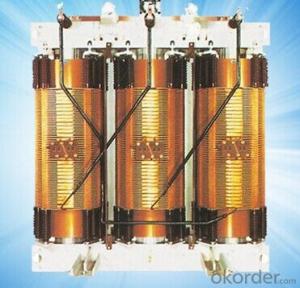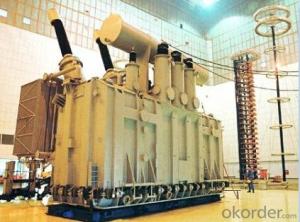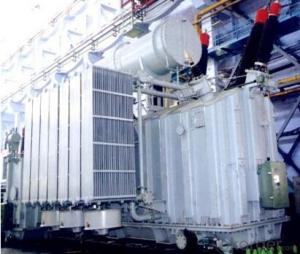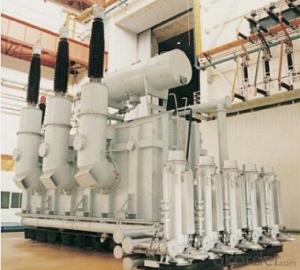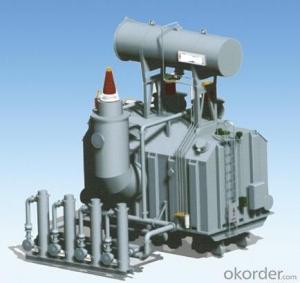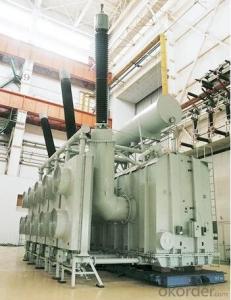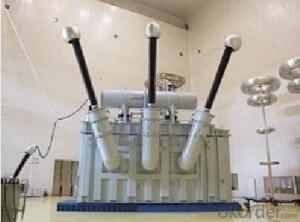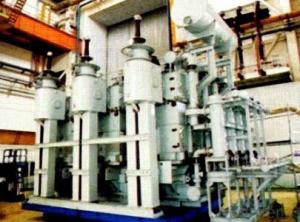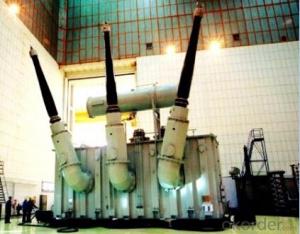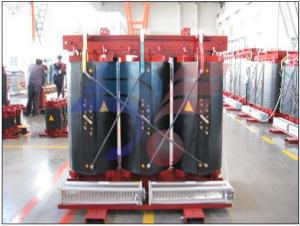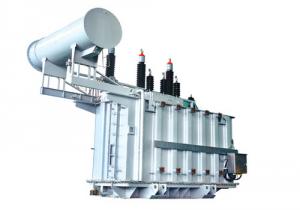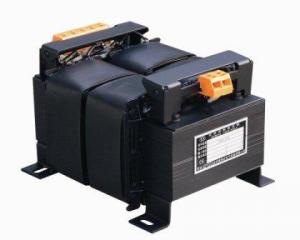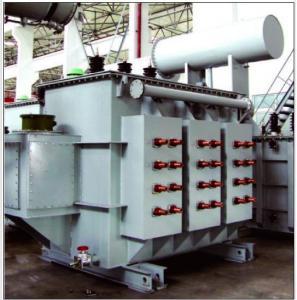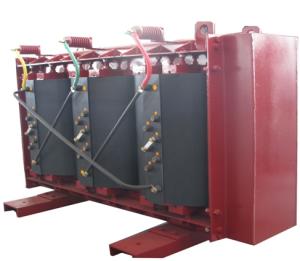840MVA/550kV three phase water cooling main transformer for the hydro power station
- Loading Port:
- Tianjin
- Payment Terms:
- TT OR LC
- Min Order Qty:
- 1 pc
- Supply Capability:
- 1 pc/month
OKorder Service Pledge
OKorder Financial Service
You Might Also Like
Quick Details
| Place of Origin: | HeBei | Brand Name: | CNBM | Model Number: |
|
| Usage: | Power | Phase: | three | Coil Structure: | Toroidal |
| Coil Number: | Capacity: | Rated Voltage: | 840MVA/550kV | ||
| Connection Symbol: | YNd11 Dyn11 YNyn0d11 | Tank: | Cover type or Bell type | OLTC: | MR or ABB or SMS |
Packaging & Delivery
| Packaging Detail: | Mainbody --naked Disassembled parts -- crate |
| Delivery Detail: | 3 months |
Specifications
1. CESI certificate
2. High short-circuit withstand
3. Low loss, PD and noise
4. CTQC certificate
5. No leakage
Description
The application of the 840MVA/550kV three phase water cooling main transformer for the hydro power station.can significantly improve the economy of the OLTC substation, and matches well with the transmission capacity of OLTC lines, which has wide prospect of application. Because of its large capacity and large volume, the whole transportation weight with nitrogen is about 470-490 tons, and due to the restricted transport conditions, the transportation becomes the critical issue for the 840MVA/550kV three phase water cooling main transformer for the hydro power station. In order to make the products applicable to any OLTC substation in our country, the state grid of corporation of China set the "A study of easy-transport large capacity OLTC Transformer” as a key scientific research projects, and entrusted BTW to carry out the research.
During the process of research and development, BTW adopted the advanced design technology and modular design, the transformer can be transported disassembly and with advantages of compact core and winding body, less transportation weight and low transportation cost, effectively solves the need of OLTC construction in the transportation restricted areas. By using the most advanced 3D magnetic field calculation software, BTW performed detailed analysis and calculation for the magnetic flux leakage and eddy current loss of the transformer coil, iron core and oil tank steel structures. Besides, by using of the advanced electric field calculation software, BTW performed detailed analysis and calculation of main longitudinal insulation, and mastered the arrangement of the main longitudinal insulation of large capacity OLTCtransformer and the control of distribution of winding magnetic flux leakage. All of which make the products with low loss, low noise, small volume, strong anti short circuit ability, no local overheating and other significant advantages, and guarantee the long-term safe and stable operation.
The world's first on-site assembled large capacity OLTC Transformer’s right at the first time once again filled the gap in the field of OLTC transformer research after Chinese transformer industry overcame the difficulty of integral transport of the 840MVA/550kV three phase water cooling main transformer for the hydro power station, which marks BTW has fully occupied the world transformer industry technical peak. The successful development of the product filled the gaps in the domestic technology and met the urgent need of OLTCconstruction application in our country, greatly improved the technical level and manufacturing ability of BTW in terms of OLTC Transformer products.
- Q: For my proposed new aluminium extrusion factory I ve the load of 250 kw heater and 670 HP of motors.Whats the kva rating of the transformer I should go for?Pls advice.
- Your connected load is about 250 kW plus about another 700 kW (from the motors when taking into account efficency and Power Factor). So the total connected load is just under 1000 kw. This 1000 kw is about 1 MegaWatt ( MW). A MegaWatt is 1000 kW You want to oversize your transformer, to account for added load at a later time as well. If I was ordering the transformer, I would be looking at one to cover at least a 1.5 MW. This would be roughly a 1,500 kVA transformer. You could order one slightly smaller, and add cooling fans which come on at max loads to cool down the transformer and increase its kVA rating. Because you have a large motor load, you will likely need the full 1500 kVA unit, because of the Power Factor issues with motor loads. BTW --- there may be a 1 year lead time on ordering a transformer that size.
- Q: I enjoyed both of these titles' first games very much. I am a big Transformers fan but I also love the first person shooting action Borderlands has to offer. I only have enough money to pre-order one and get it on its release date but I can't decide. What are your opinions? What will I get better gameplay value out of? Which do you think has a better pre-order bonus? I welcome any and all opinions and answers!
- Hi, okorder
- Q: High-rise residential basement transformer noise is too large, how to solve, whether the need to shift, there is no other way to solve! Thank you as much as possible! If you have to do this project also please educated us!
- Transformer noise is mainly caused by magnetostriction of silicon steel sheet. method: 1, choose a reasonable magnetic density; 2, core clamping; 3, pad to take shock measures; 4, the tank within the parts fastening, does not allow loose metal parts or standard; 5, all the accessories on the tank must be tightened; 6, the use of low noise fan; 7, the installation of the basic level. Dry-type transformers do not have fuel tanks, remove the other 5, the same, because the dry-type transformers do not have the mailbox, the core magnetic choice, parts fastening, installation foundation leveling is more important
- Q: I use transformers in my circuitry all the time but when a transformer is say a secondary 12v 1a transformer than what does it mean by 1 ampis it that the secondary winding wire will pop after 1 amp doo to the simple thinness of the wire? or that the ohms of the secondary coil, when using iv/r, 112/12so does this tell you that the coil is 12 ohms?please don't give me other information about the transformer just answer the question please.
- It simply means that the maximum safe operating load on the transformer's secondary is 12VA. The maximum safe operating power this transformer can furnish (12 V)*(1A)*(power factor of load's impedance). Power factor is always equal to or less than 1. Power factor cos [arc tan (XL - XC)/(R)]
- Q: I know that Cartoon Network showed a couple of commercials for season two of Transformers Animated,but when?To add,the stopped showing those commercials.like,one week after the first time the commercial aired.Did the have second thoughts and decided to cancel it?
- Transformers Animated has been cancelled after the end of Season 3. This was announced at BotCon approximately two weeks ago. Currently, there has been no announcement as to what will follow it in the Transformers TV line, other than that there will be something.
- Q: Transformer Wiring and Principle
- Three-phase transformer works: the basic working principle of the transformer is the principle of electromagnetic induction. When the AC voltage is applied to the primary winding, the AC current flows into the winding to generate the excitation effect, and the alternating magnetic flux is generated in the iron core. The alternating magnetic flux passes through the primary winding and passes through the secondary winding , Which induces the induced electromotive force in the two windings, respectively. At this time if the secondary side and the external circuit load connected, there will be AC ??current out, so the output power.
- Q: hey all , i have 2 phase welding machine fed from 30A 3 phase circuit breaker , at high loads above 40A CB cut off the Supply . the problem is i cant change the CB size bcoz it Contrary to legislation in the country . Can i used scott t transformer to balance the load at the main 3 phase ?
- you're starting to be to be meant a single section welding device. This unit includes 2 supply lines. those lines may be linked to any 2 lines of a three-phse ability supply device.only connect one line to L1 and the different line to L2, only examine the line to line voltage of the flexibility supply. It must be the comparable by way of fact the welding device score, say, 380VOLTS, 50 Hz.
- Q: Hello, I'm new to electronics and I would like to know how is the current affected by a step-up or step down transformer. EX: Lets say you have a pure AC wave (60Hz , 25vac, 5A) hooked up to a 1:4 power transformer with a current rating of 10A, What will the voltage and current be and why? Thank you!
- If you assume no losses, the power remains constant. If the voltage is stepped up, the current is stepped down in the same ratio. The input current will depend on the output current drawn by the load. With a transformer stepping up 1:4, 25 volts becomes 100 volts and the current is determined by the resistance of the load. If you assume it to be 100 ohms, for example, the current will be 1 amp. This is reflected as a current of 4 amps at the input.
- Q: Does the production transformer require 3C certification? Does the country have any specific requirements?
- In general, the production of power transformers do not require 3C certification. The state does not have specific requirements, but if you want to tender, is certainly qualified, the most important is: the state authority of the type of test report (often: National Transformer Quality Supervision and Testing Center (Shenyang)) and model registration Certificate, then ISO9001
- Q: A 630 kVA, 11kV/400V transformer. Rp, Xp, Rs, Xs, Rc, and Xm are given. How to find secondary and primary? Do I need to calculate the total impedance referred to the primary and secondary or can I calculate currents without it?
- 630 Kva Transformer
Send your message to us
840MVA/550kV three phase water cooling main transformer for the hydro power station
- Loading Port:
- Tianjin
- Payment Terms:
- TT OR LC
- Min Order Qty:
- 1 pc
- Supply Capability:
- 1 pc/month
OKorder Service Pledge
OKorder Financial Service
Similar products
Hot products
Hot Searches
Related keywords
